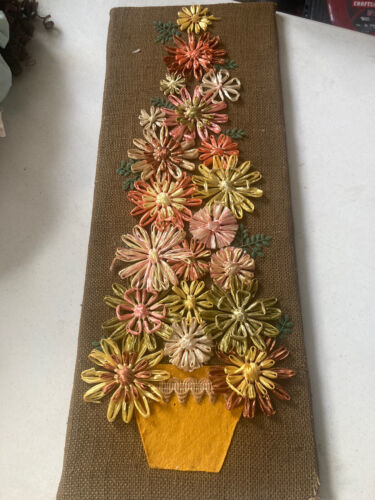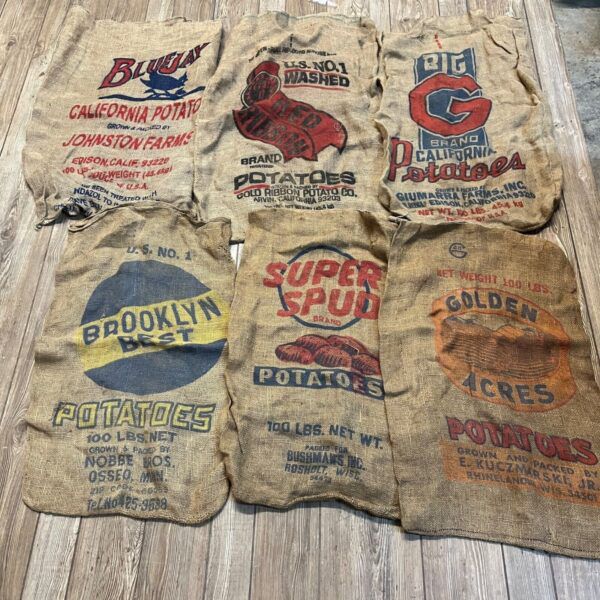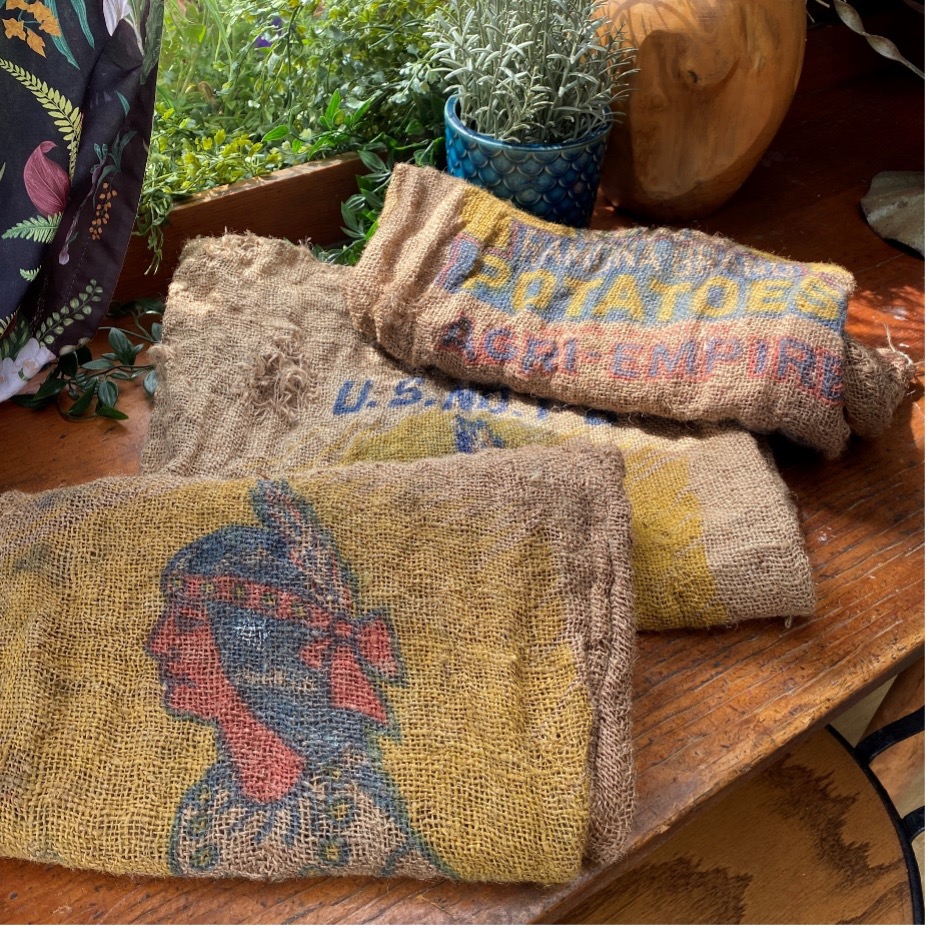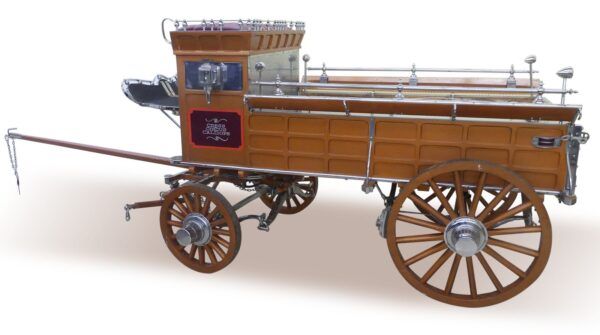#Burlap #AllAround #Fabric #Champ #WorthPoint
If you’re looking for a truly versatile fabric, look no further than burlap—that rough, earthy-smelling, woven material that’s as practical and eco-friendly as it is fashionable.
Want a perfect backing for framed embroidery? Burlap. How about a fabric that’s easy to dye or print on? Yes, burlap. This fabric’s strength and breathability also make it ideal for transporting food commodities like grain, coffee, rice, and peanuts. Military forces use it for camouflage. Because it’s biodegradable, nurseries use it to wrap tree and shrub roots.
For this unique fiber, versatility is an understatement. And let’s not forget that vintage burlap feed sacks are still great collectibles.
A Quick History of Burlap
Before I go further, let’s briefly look at burlap’s history. Also called hessian in Europe and Australia, burlap comes from the sinewy stalk of the jute plant, which grows mainly in India.
In the late 1700s, English traders saw profit in the annual jute shrub and began exporting it. Between 1855 and 1869, India built five jute mills with more than one thousand looms, eventually dominating the jute market. By 1969, nearly 68,000 looms in India wove the sturdy jute fabric into burlap. Today, China and Brazil grow jute, and the most significant raw jute importers include Germany, Japan, the United Kingdom, France, and Belgium.
While it’s primarily known as a fiber crop, jute leaves are also used as thickeners in soups and stews. The innermost part of the stem is used to make paper. If left in the ground, its roots fertilize the soil for future crops. If there’s anything jute can’t do, I still need to find it, although I must note that burlap can also come from flax and hemp plants.

The Burlap Bag and the Gunny Sack
Properly discussing burlap and the “burlap bag” means also checking its terminology, and I can’t do that without mentioning the “gunny sack.” By that, I don’t mean “Gunne Sax.” I’ll get to that phrase later.
I checked the American Heritage Dictionary to get the goods on the phrase “burlap bag,” also called a “gunny sack,” depending on where you live in the United States. Generally speaking, the burlap bag is defined as “a sack made from loosely woven, coarse material.” Much of the country, especially the northern parts, call it a “burlap bag,” the dictionary said, and those in the “Midwest and West Common” refer to it as a “gunny sack.” Southern US populations call the burlap sack a “tow bag” or “tow sack.” Now, all those phrases, the dictionary noted, come out of the various languages of India, including the “gūṇī, sack” in Punjabi, the Marathi “goṇī, sackcloth,” and Hindi “gon, sack.”
The Gunne Sax
Leave it to the 1970s hippie scene to take the phrase “gunny sack” to a new level. If you’re a child from that era like me, you’ll remember the “Gunne Sax” dress—a must-have for every aspiring female flower child. In the 1960s, San Francisco designers Eleanor Bailey and Carol Miller created the “Gunne Sax” brand of whimsical prairie-style dresses. The name “Gunne Sax” was what the designers called a “sexy” bit of fantasy wordplay on the “gunny sack” dresses made not from itchy, coarse burlap but from cotton and linen feed bags during the Great Depression (1929–1939). These dresses, also called “flour sack” or “feed sack” dresses, exemplify the magic that happens when frugality and thrift combine with creativity.
During those lean years, women used needle and thread to transform linen feed bags into “dresses, underwear, towels, curtains, quilts, and other household necessities.” By the 1940s, bag manufacturers were producing brightly colored feed sacks with printed designs to boost sales, hoping women would select brands based on the look of the feed sack alone. If you want to deep-dive the Gunne Sax dress, check out this WorthPoint Blog article.
Collecting, Caring for, and Cleaning Vintage Burlap
The intriguing and colorful history of burlap also highlights why vintage and antique fabric bags remain common collectibles. You can find hundreds of inexpensive listings on marketplace sites like Etsy, eBay, and Mercari. With that in mind, there are hundreds of craft ideas for burlap, from turning old feed bags into pillows to using burlap strips to create door wreaths, framed art, or even a terrific bulletin board.
Before using vintage burlap, it’s often wise to clean it. Don’t worry; it’s a straightforward process.
I recently picked up three antique burlap potato sacks from a yard sale and decided the best way to clean them was by hand washing.
First, I turned them inside out and soaked them in clear cold water for about fifteen minutes in my kitchen sink. I then rinsed them thoroughly until the water ran clear. After that, I soaked them in Murphy’s Oil Soap for another fifteen minutes, again rinsing them until the water ran clear. The oil soap not only added a fresh scent to these otherwise musty-smelling potato sacks but also added just enough oil to keep the fibers from becoming brittle. I pressed them in the sink to wring out excess water, using care not to twist and stretch the fabric. I laid them out to dry in the shade, and now they are ready for their next chapter.
Only Authentic Burlap Is Eco-Friendly
If you’re purchasing new burlap for craft projects and want to ensure they’re Earth-friendly, remember to check the packaging to see if it’s authentic and not synthetic. You can test burlap without packaging from a yard sale by using a lighter to burn a small corner of the fabric. If it burns, it’s burlap. If it melts, it’s synthetic.
Burlap for the Win
There are so many fun ways to use burlap in crafts and decorating. Unfortunately, I buy it by the rolls and then store it indefinitely for that elusive project, then either donate or sell it at a yard sale. Hopefully, I’ll find something interesting to make with my recent purchase, but I’m sure I found myself in a Reddit conversation about burlap crafts. Redditor @JWolfbeard said burlap bags “are great for sitting in the garage with the intention of doing something really neat with them.”
Between excursions to hunt for antiques and vintage décor, Lynda Houston is busy restoring her 1950s cottage in Cincinnati, Ohio. She and her partner Dave Beck operate TheRustInPeaceShop on Etsy.
WorthPoint—Discover. Value. Preserve.





